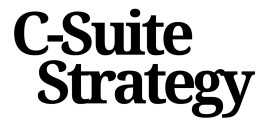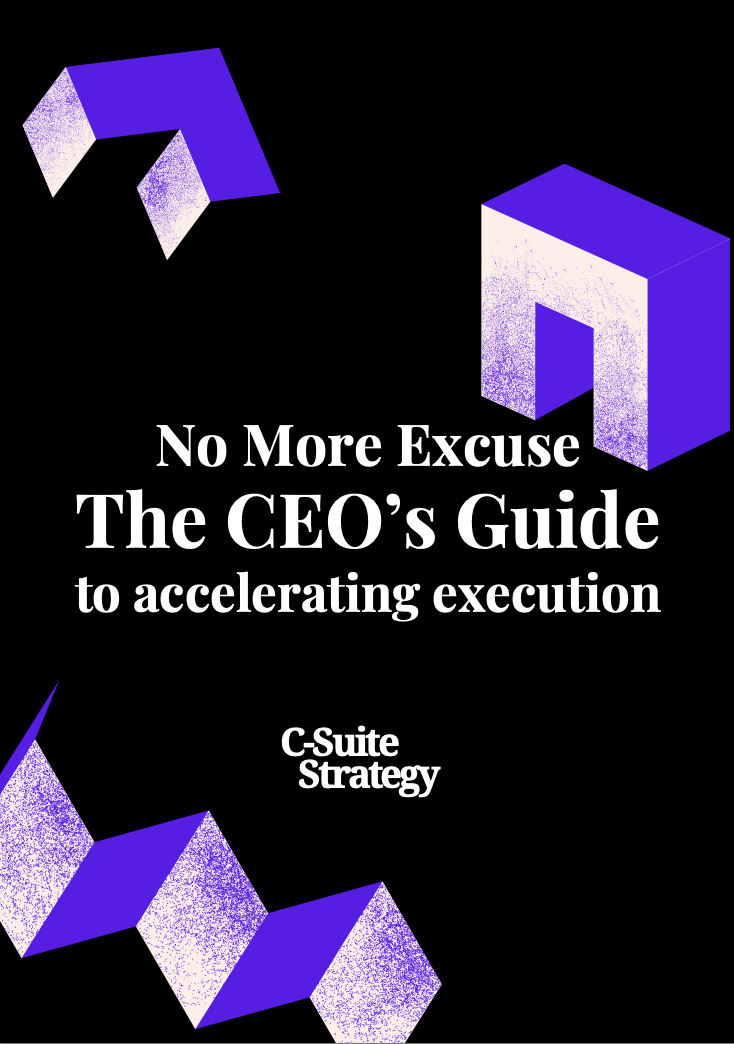
Understanding the Importance of Executive Evaluation
Embracing the Significance of Executive Evaluation
In today's rapidly changing business environment, the importance of executive evaluation cannot be overstated. Evaluating leadership through a structured and thorough executive assessment enables companies to ensure that their top executives possess the necessary skills and capabilities to drive business success. By employing various assessment test methods, companies can better understand their executives' strengths and areas for improvement, ultimately aligning leadership competencies with the company's strategic objectives. However, understanding the true value of such evaluations goes beyond mere assessment. They facilitate the measurement of quantitative reasoning, verbal reasoning, and critical thinking skills, ultimately leading to more informed decisions. Executive evaluations incorporate elements like integrated reasoning and problem-solving to paint a clear picture of an executive's abilities. Key areas often measured include verbal and quantitative reasoning, crucial for leadership roles, particularly in executive MBA programs. The GMAT exam and similar tests like the GRE provide analogs, demonstrating the multifaceted nature of these assessments. Each question type serves as a tool to gauge how an executive might perform under pressure, solve problems, and adapt to new scenarios. Moreover, aligning these evaluations with company strategy and objectives ensures that leaders are not only competent but also conducive to the business's long-term goals. This alignment will be explored in more depth in subsequent sections. Incorporating data-driven insights from executive evaluation helps shape leadership development initiatives tailored to the specific needs of the company. For leaders seeking to maximize their impact, it's crucial to recognize the role of executive evaluation in shaping effective and adaptive leadership. For additional insights into enhancing your leadership capabilities through structured evaluation, consider exploring building an effective coaching and mentoring network for C-suite success.Key Components of Effective Executive Assessment
Identifying the Core Elements of Executive Evaluation
In the fast-paced business landscape, understanding the key components of executive assessments is critical for fostering both individual and organizational growth. For leaders, an effective executive evaluation can pave the way toward refined skills, better decision-making, and impactful leadership. The essential components to consider include:- Cognitive and Reasoning Abilities: Administering a series of assessment tests, such as quantitative reasoning or verbal reasoning, provides a thorough understanding of an executive's problem-solving skills. Using a combination of GMAT, GRE, and similar exams, organizations can measure capabilities in integrated reasoning and data sufficiency. This ensures that executives can effectively tackle complex business questions with critical reasoning.
- Behavioral and Personality Insights: Gathering insights through tools that assess behavioral tendencies can help highlight strengths and areas for improvement. Understanding personality traits allows companies to tailor executive MBA programs that focus on enhancing leadership qualities.
- Leadership and Communication Skills: Effective leadership is contingent on strong communication skills. Tests evaluating verbal reasoning and sentence correction can highlight potential areas where improvement is needed, allowing for comprehensive development programs that bolster verbal reasoning capabilities.
- Quantitative Analysis and Decision-Making: Executives often face high-pressure environments that require quick decision-making abilities. Assessment sections targeting quantitative skills, such as those in quantitative reasoning and data-driven environments, score executives on their capability to respond to these challenges swiftly and accurately.
Aligning Executive Assessment with Company Strategy
Integration of Strategic Goals in Evaluation Process
Executive assessment goes beyond simply evaluating individuals based on their test scores or MBA program completion. It requires a deep alignment with the organization's strategic goals. Such alignment ensures that the assessment process not only identifies capable leaders but also those who will drive the company towards its strategic vision.
Understanding how executive assessment influences the larger strategic framework of the company is critical. The results from these evaluations, which may involve quantifying verbal and reasoning skills through GMAT or GRE-like sections, can offer valuable insights into the candidate’s ability to handle real-world business scenarios. Here is how alignment can be achieved:
- Strategic Identification of Leadership Traits: Highlight leadership skills that resonate with the company’s future direction. This involves critical reasoning capabilities, problem-solving aptitude, and verbal reasoning skills essential for strategic leadership roles.
- Utilizing Data for Strategic Decision-Making: Leveraging data sufficiency and reasoning quantitative results can help top executives determine the right fit for leadership roles in the organization, directly impacting long-term strategic goals.
- Incorporating Culture-sensitive Measures: The assessment should consider traits that align with the company’s cultural and ethical values, promoting an inclusive and forward-thinking business environment.
- Focus on Development and Potential: Executive assessment should not just focus on current capabilities but also on the potential for growth and the ability to partake in executive MBA or other advanced leadership programs, encouraging continuous leadership development.
By incorporating these elements into the assessment process, executives can ensure that the leadership cadre not only possesses the right contemporary skills but is also aligned with the company's strategic ambitions.
Tools and Techniques for Comprehensive Executive Evaluation
Evaluating with Precision: Methods and Instruments
A comprehensive executive evaluation requires a methodical approach tailored to assess various facets of leadership capacity. In this discussion, I explore how a blend of tools and techniques can optimize the assessment process, drawing upon foundational elements covered in previous parts of our exploration. To accurately assess the capabilities of executives, organizations utilize a range of tools, each offering distinct insights:- IQ & Aptitude Tests: Tools such as the GMAT and GRE provide valuable data on quantitative reasoning and verbal reasoning skills. These tests focus on analytical writing, critical reasoning, and data sufficiency, all essential for executive decision-making.
- Behavioral Interviews: These sessions delve into past behaviors to forecast future performance, providing nuanced insights beyond standardized tests.
- 360-Degree Feedback: Gathering perspectives from colleagues, subordinates, and superiors offers a textured view of an executive's influence within the organization.
- Psychometric Evaluations: Often used to gauge emotional intelligence and personality traits, these tests help in understanding the executive's fit within corporate culture.
Integration of Advanced Assessment Tools
The assessment landscape is continually evolving, marked by the introduction of advanced technologies. Hybrid testing formats, such as integrated reasoning sections, blend problem-solving with data interpretation, presenting real-world scenarios to evaluate an executive's skill set. Meanwhile, business simulation exercises are gaining traction, immersing candidates in realistic challenges to observe genuine reactions and strategic thinking. The key to successful executive assessment lies in tailoring tools to position-specific requirements, ensuring alignment with organizational objectives. Advanced assessment centers can curate bespoke assessment days, tailoring tests and question types to match the respective skills needed for various executive roles.The Strategic Application of Assessments
Assessing time management and decision-making through stringent situational evaluations can signal how an executive might perform under pressure. Focusing on executive mba programs and emba programs helps align these evaluations with leadership development paths. Test centers within corporations can administer assessment tests focusing on quant verbal abilities, ensuring the executive team is equipped with the necessary verbal skills and quantitative reasoning for high-level decision-making. By integrating such comprehensive tools into the executive assessment framework, companies take pivotal steps toward not only evaluating but also enhancing their leadership's strategic prowess. The challenge remains in synchronizing these evaluations with the broader company strategy, thereby harnessing the evaluations' potential for driving competitive advantage and cultivating executive growth.Challenges in Implementing Executive Assessment
Overcoming Roadblocks in Executive Evaluations
In the realm of executive evaluation, several challenges can impede the effectiveness of assessment programs. Understanding these roadblocks and developing strategies to navigate them is vital for ensuring that executive assessments align with the broader company strategy and enhance leadership capabilities. Firstly, the balancing act between quantitative reasoning and qualitative insight can pose a formidable challenge. Many emissions are filled with impressive quant scores or extensive verbal reasoning experience, yet fall short when it comes to translating those skills into practical, business-specific scenarios. An effective executive assessment must incorporate a holistic approach that evaluates both quant verbal skills and critical reasoning within a business context. Moreover, reliance on standardized assessments such as GMAT or GRE, while offering quantifiable data and comparability, can sometimes obscure the multifaceted nature of executive performance. These exams often emphasize integrated reasoning and sentence correction, potentially eclipsing valuable skills such as problem solving and critical thinking. Thus, integrating these tests with personalized case-study questions or leadership scenarios can provide a more comprehensive assessment picture. Time constraints present another hurdle, particularly for those balancing MBA programs or EMBA programs alongside executive roles. Scheduling assessments in a way that doesn't disproportionately burden the test takers is crucial. This might involve flexible testing windows and multiple test center locations to accommodate the busy schedules of executives. Lastly, interpreting the data sufficiency from these assessments can be challenging. Program administrators must ensure they have the tools and expertise to analyze results efficiently, drawing actionable insights that will inform leadership development paths. It's essential that the codified data doesn’t just sit idly but drives initiatives that produce tangible leadership enhancement. By proactively addressing these challenges, companies can ensure that their executive assessment programs not only situate talents within strategic frameworks but also foster enduring leadership growth and effectiveness.Leveraging Executive Assessment for Leadership Development
Transforming Insights into Leadership Growth
Leveraging executive assessment effectively requires more than just recognizing potential pitfalls; it’s about transforming insights from the data into valuable growth opportunities for leadership development. To ensure this transformation is successful, executives must consider several strategies:- Focus on Integrated Reasoning: This aspect of the executive assessment evaluates critical reasoning and problem-solving abilities, essential for effective leadership. Enhancing these skills not only improves test scores but also bolsters overall decision-making abilities in complex business environments.
- Personalized Development Plans: Utilize the detailed insights gained from assessment tests, such as GMAT-like quant and verbal reasoning, to tailor development programs. These should focus on strengthening both quantitative and verbal skills, ensuring a balanced skill set that is critical for executive development.
- Regular Feedback Loops: Implement a structured feedback mechanism that allows for continuous evaluation and improvement. By regularly revisiting these assessments, executives can realign their career trajectories and leadership strategies in response to evolving business needs.
- Fostering a Learning Culture: Encourage an atmosphere where continuous learning and development are not just encouraged; they are part of the organizational culture. This can be supported by opportunities such as executive MBA programs that offer advanced insights into business and strategic management.
- Collaborative Problem Solving: Develop scenarios and situations that encourage collaborative discussions around problem-solving and critical reasoning. These can mimic real-world business challenges, preparing leaders to approach similar issues with a strategic mindset.














